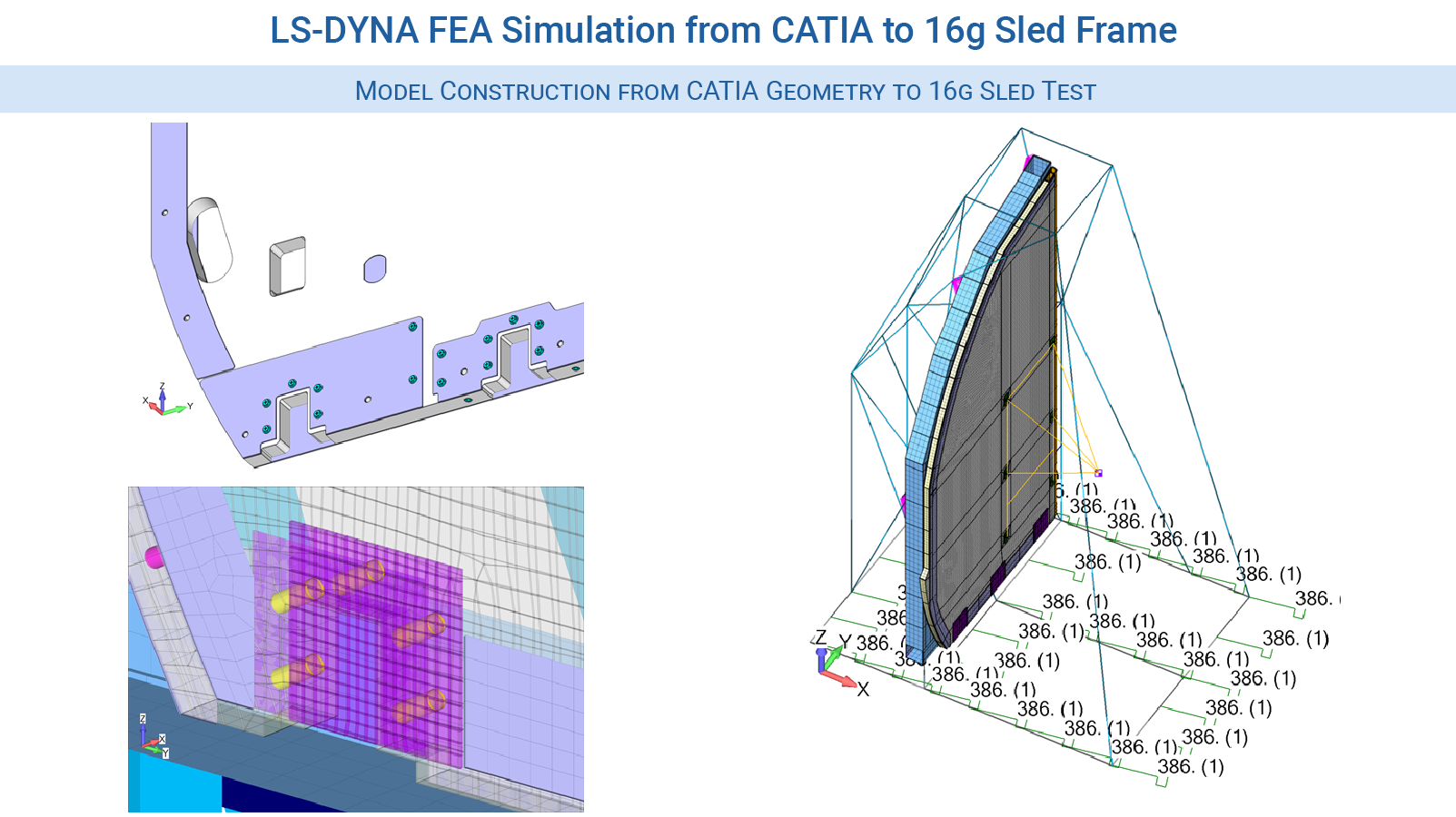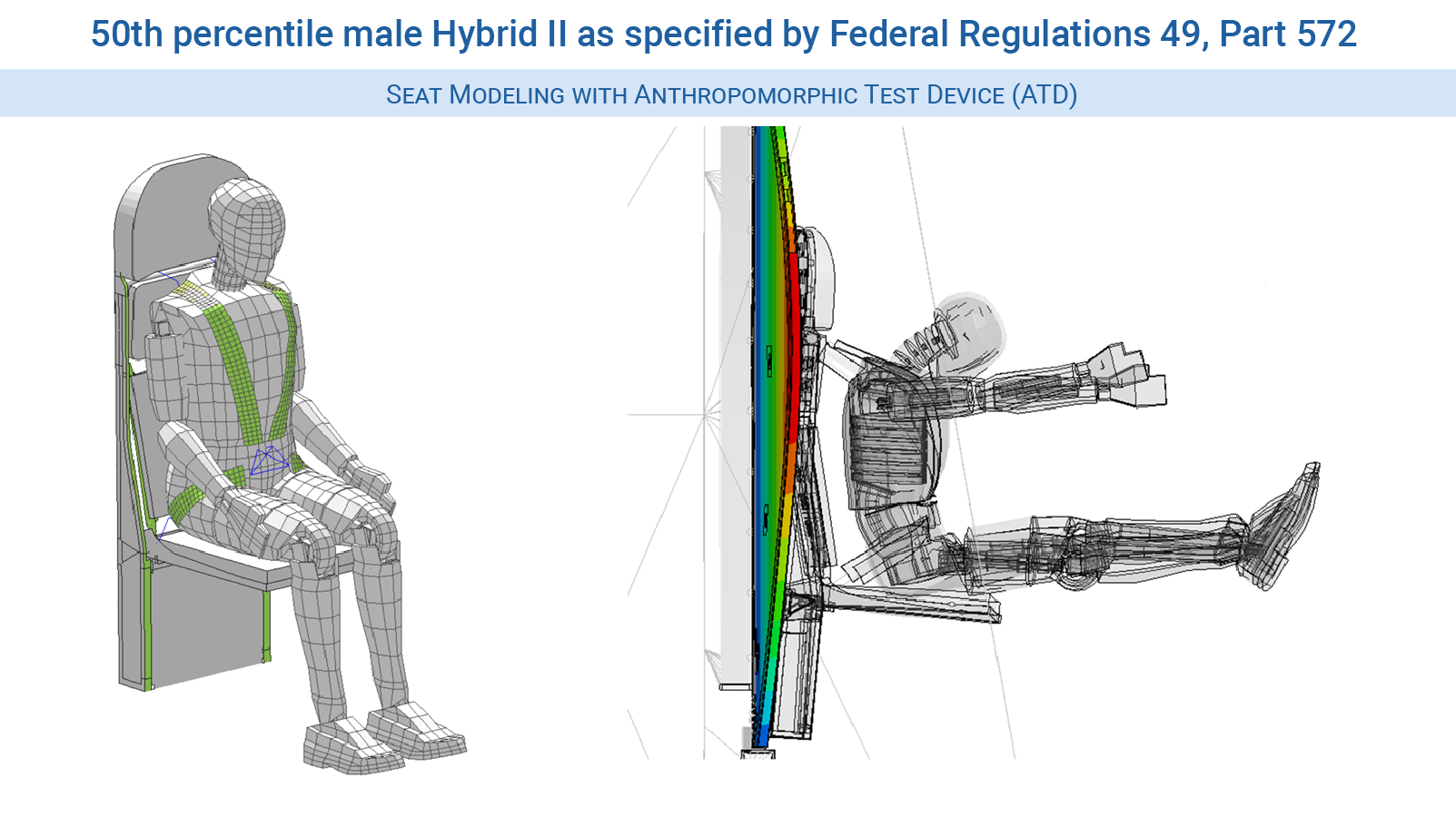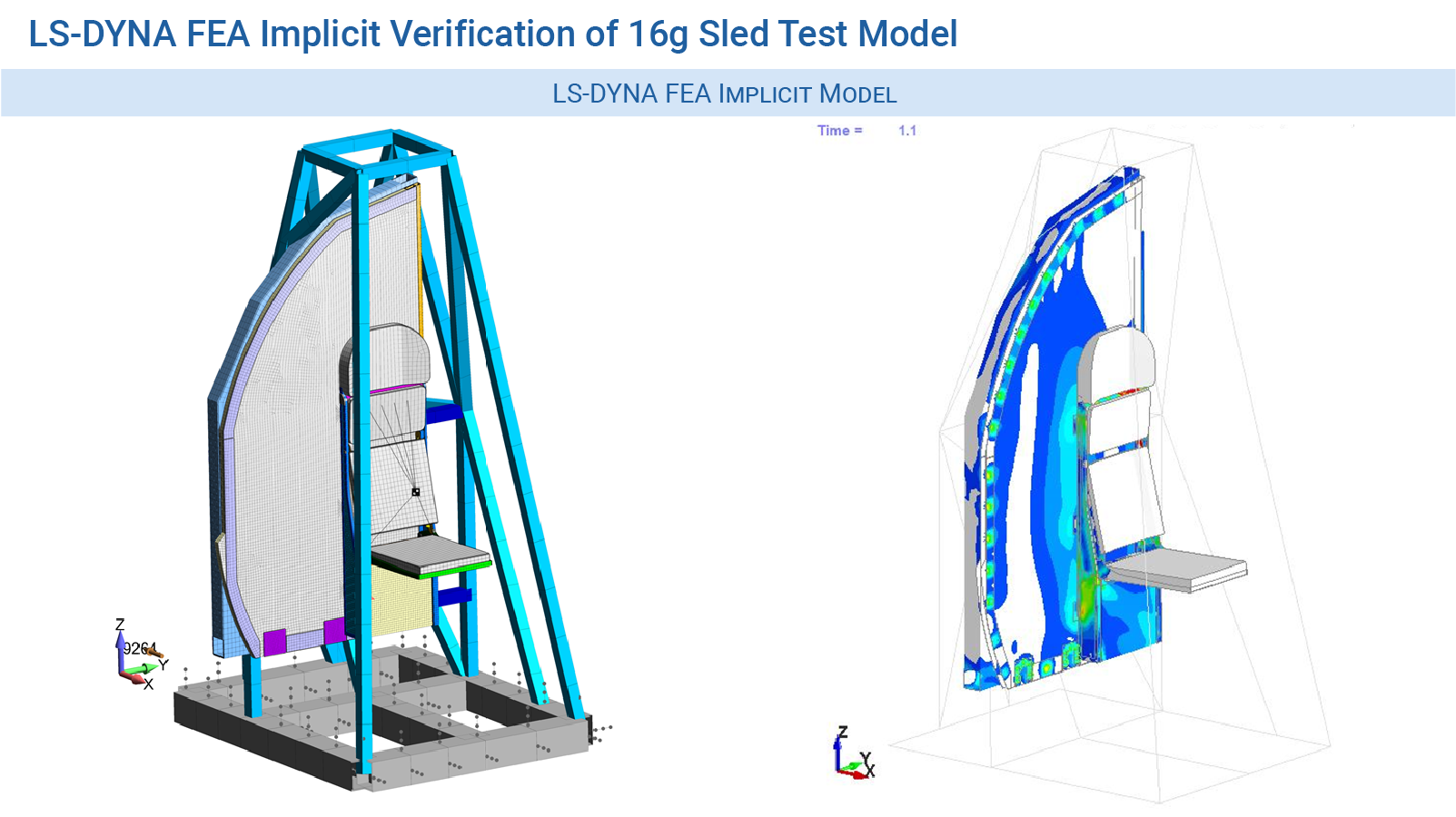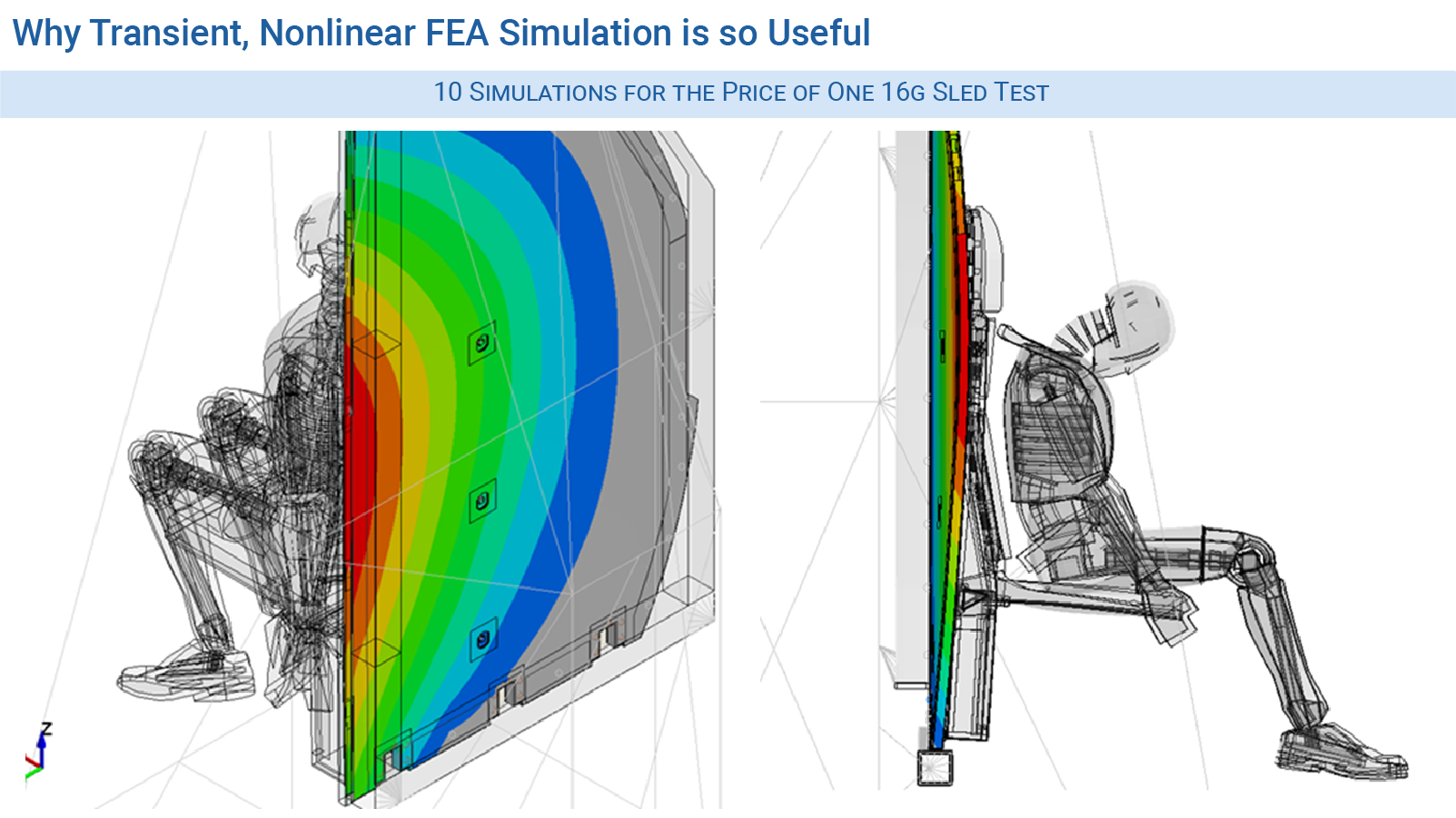16g Sled Test Analysis of Lavatory Wall with Attendant's Seat
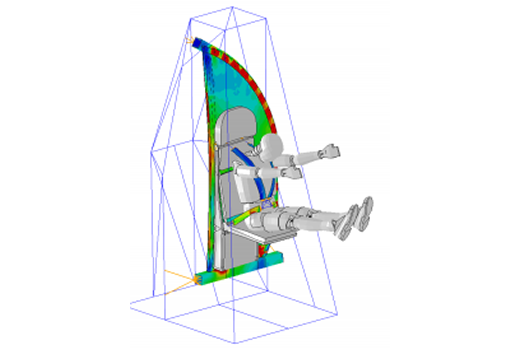
Analysis
Objective
The engineering of airplane seats is quite complex due to competing demands for lightness and the ability to survive a 16g sled test. Experimentally, a 50% percentile dummy or anthropomorphic test device (ATD) is strapped into the chair and then subjected to a 16g acceleration pulse with a half-sine pulse width of 0.18 second. The test procedure is well defined under 14 CFR Part 25.562, Amendment 25-64 and JAR Part 25.562 with guidance given under SAE AS8049 Rev. A and for the ATD under 49 CFR 572.
In this LS-DYNA FEA consulting services work, the objective was to limit the design and schedule exposure of a new design. One can think of this as FEA insurance; that is, it is must less expensive and faster to virtually test than to destroy prototypes on a 16g sled test.
The LS-DYNA model was constructed from the client’s CATIA geometry. The Nomex cored sandwich panel was idealized using a combination of solid elements for the core and laminate shell elements for the composite skins. This type of 3D modeling provides accurate simulation of the progressive failure of the composite skins (see 026_Jensen,A_PAPER Broad-Spectrum Stress and Vibration Analysis of Large Composite Container.pdf). Likewise, phenolic anchor blocks were modeled with solid elements and then integrated into the wall panel. As part of the virtual manufacturing process, key fasteners were preloaded prior to analysis to enable shear transfer across bolted interfaces.
The model was first proof tested without the ATD using LS-DYNA’s implicit solver to ensure that the structure was tight and could withstand the 16g sled test environment. After this verification stage, the model was repurposed with an ATD for the full, nonlinear, transient explicit analysis. At the start of the transient analysis, bolts were preloaded and the ATD was allowed to settle onto the attendant’s seat, once the model had stabilized, the sled’s deceleration pulse was applied. Progressive composite failure was simulated using *MAT_54 with strain based failure criteria for tension, compression and shear. All metal components strength levels were based on MMPDS values. The complete transient, nonlinear simulation took about four hours to solve using 16 CPU-Cores. Results aligned well with the 16g sled test data.
PDF Download
16g Sled Test Video
